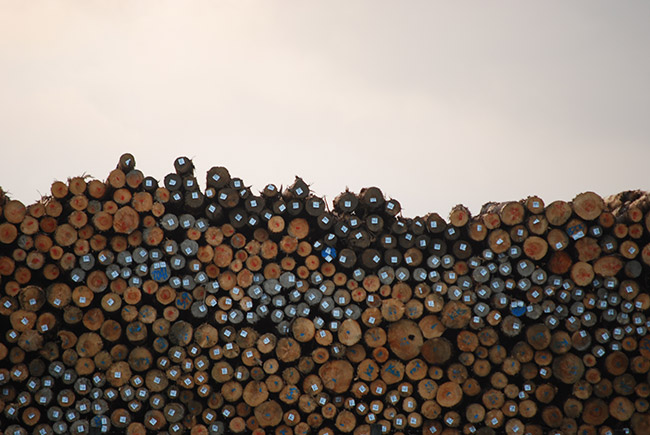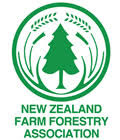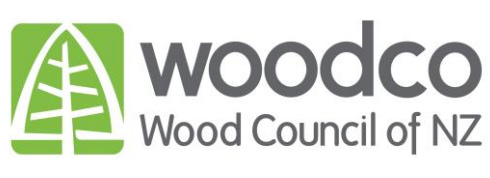
| MAIN |
DAIRY |
SHEEP |
BEEF |
FORESTRY |
WINE |
KIWIFRUIT |
AVOCADOS |
HONEY |
| related: Swamp Kauri |
||||||||||
Forestry |
||||||||||
|
|
||||||||||
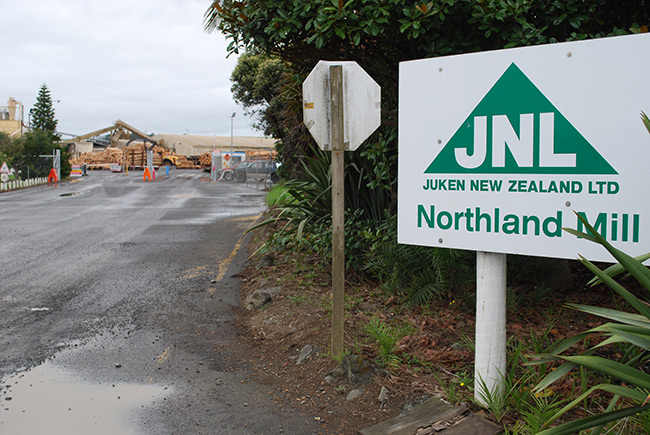 |
||||||||||
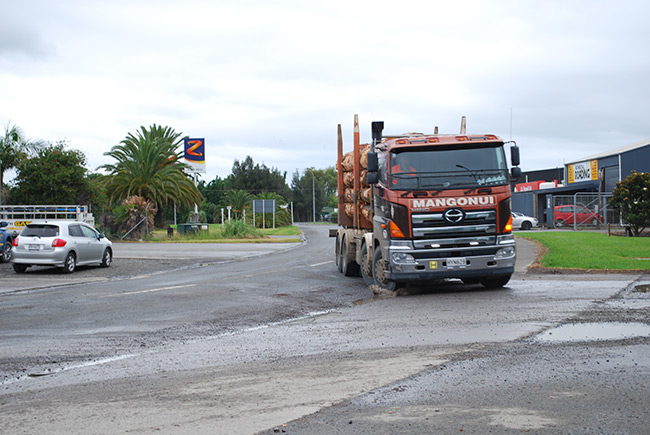 |
||||||||||
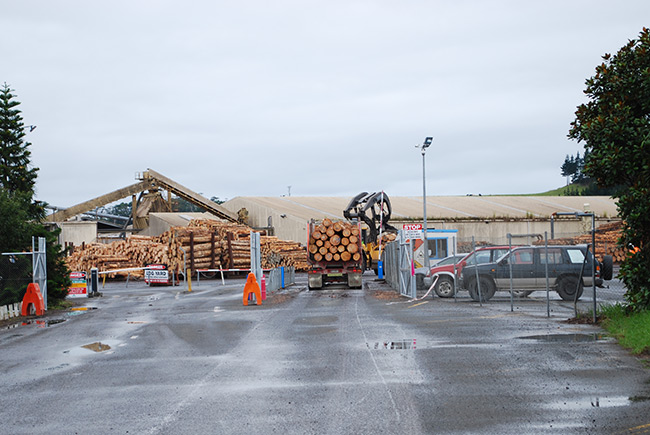 |
||||||||||
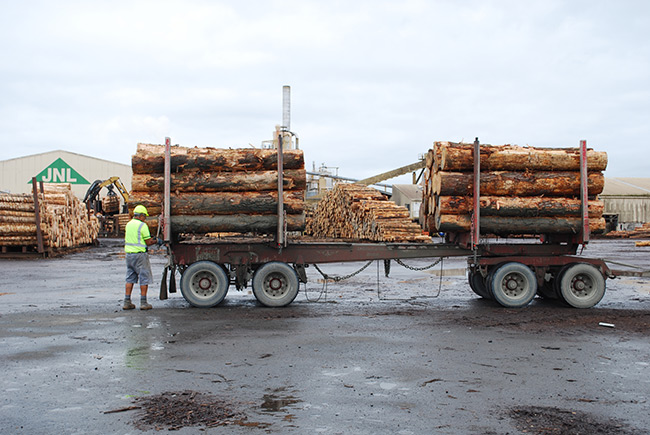 |
||||||||||
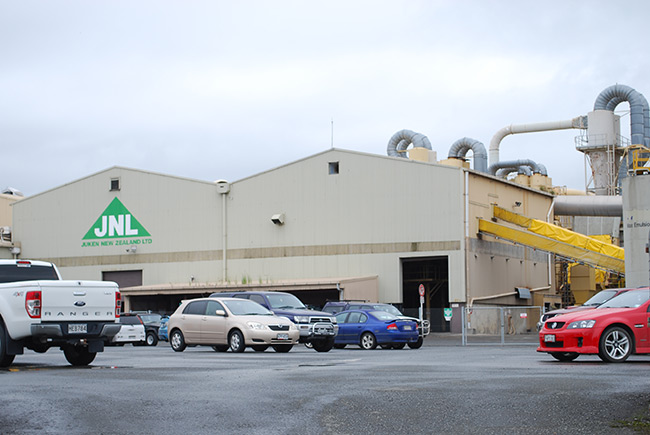 |
||||||||||
| March 16 - The Juken (Juken New Zealand Ltd) triboard mill, veneer plant and sawmill in Kaitaia. Juken is a subsidiary of the Japanese based WoodOne Ltd, "a major international housing materials and componentry company." Juken produces "advanced and innovative wood products from selectively planted, managed and harvested Radiata Pine for local and export markets." The company was established in June 1990 when it "acquired the rights to manage approximately 60,000 hectares of forests in the Kaitaia, Gisborne and Masterton regions of the North Island." In 2012 Juken sold its management rights to the Northland forest, a 36,000-hectare block north of Kaitaia and west of State Highway 1, to Sumitomo "to improve the efficiency of long-term investment in mountain forest assets by moving some of them off the books to focus on forest management in the eastern and southern parts of the North Island to promote efficiency in business (+). | ||||||||||
|
|
||||||||||
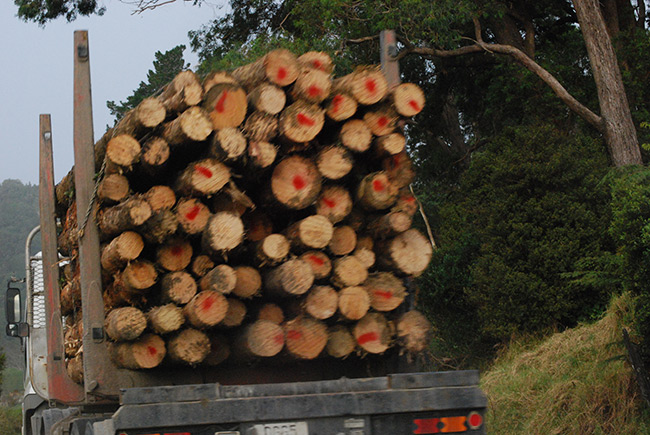 |
||||||||||
| March 17 - A
logging truck in the Kaitaia area. |
||||||||||
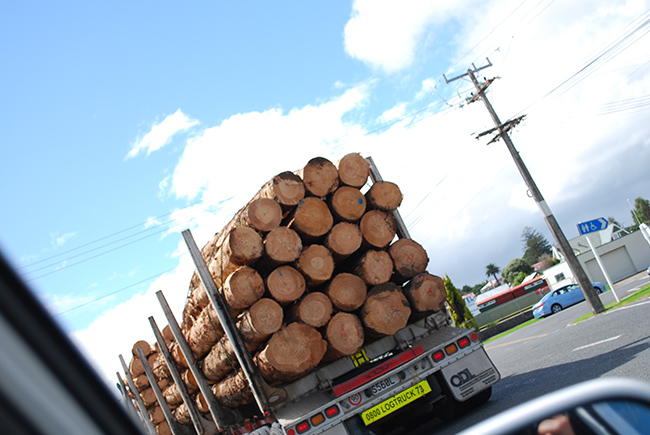 |
||||||||||
| March 18 - A
logging truck in Dargaville. |
||||||||||
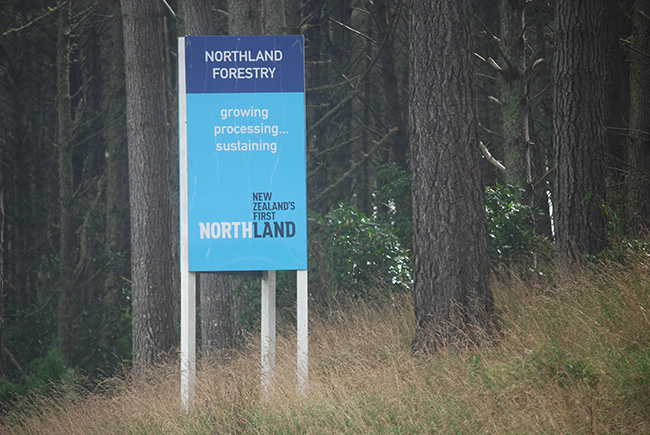 |
||||||||||
| March 18 - Sign
on the road from Dargaville to Whangarei. |
||||||||||
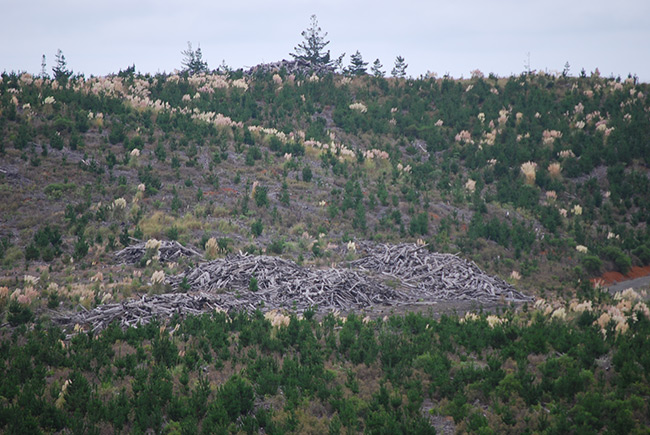 |
||||||||||
| March 17 - A
logged area near Pukenai has lots of invasive
pampas grass. |
||||||||||
Notes: Hon. Shane Jones, Forestry Minister. "One billion tree programme underway." Feb. 23, 2018 press release. https://www.beehive.govt.nz/release/one-billion-tree-programme-under-way --. "Facts & Figures 2016/17." New Zealand Plantation Forest Industry. https://www.nzfoa.org.nz/images/stories/pdfs/Facts_Figures_2016_ƒa_web_version_v3.pdf --. "Plantation forestry statistics: Contribution of forestry to New Zealand." NZIER, Mar. 2017. http://nzfoa.org.nz/resources/file-libraries-resources/discussion-papers/602-nzierreport-2017/file George Asher. "Māori Plantation Forests - A Challenge for Sustainable Forest Management," Ministry of Agriculture and Forestry. http://maxa.maf.govt.nz/mafnet/unff-planted-forestry-meeting/conference-papers/maori-plantation-forests.htm Elsdon Best. 1977. Forest Lore of the Maori. Wellington, NZ: E.C. Keating, Government Printer. http://nzetc.victoria.ac.nz/tm/scholarly/tei-BesFore-t1-front-d1.html Rāwiri Taonui. 'Te ngahere – forest lore," Te Ara - the Encyclopedia of New Zealand, Sept. 24, 2007. https://teara.govt.nz/en/te-ngahere-forest-lore --. "Māori values and native forest (Ngahere)." Landcare Research. 2005. https://www.landcareresearch.co.nz/__data/assets/pdf_file/0017/43910/maori_values_native_forest.pdf Sandy Gauntlett. "Kaitiakitanga: The Reclamation of the Domain Of Tane Mahuta. A Look at the Deforestation of Aotearoa, and an Argument for Structuring an Idealised Future." 1998. http://www.wrm.org.uy/oldsite/deforestation/Oceania/Aotearoa.html Joanna Orwin. "'Kauri forest,", Te Ara - the Encyclopedia of New Zealand, Sept. 24, 2007. http://www.TeAra.govt.nz/en/kauri-forest Michael Roche. "Exotic forestry," Te Ara - the Encyclopedia of New Zealand, Nov. 24, 2008. http://www.TeAra.govt.nz/en/exotic-forestry --. "Northland Forest Industry and Wood Availability Forecasts 2009." Ministry of Agriculture and Forestry. https://www.mpi.govt.nz/dmsdocument/851-northland-forest-industry-and-wood-availability-forecasts-2009Mary Clarke. "Devolving forest ownership through privatization in New Zealand." Unasylva (Food and Agriculture Organization of the United Nations), No. 199, 1999. http://www.fao.org/docrep/x3030e/x3030e0a.htm --. "Foreign Control of NZ - Key Facts." Campaign Against Foreign Control of Aotearoa, Feb. 21, 2018. http://www.scoop.co.nz/stories/PO1802/S00229/foreign-control-of-nz-key-facts.htm --. "Foreign land sales: the facts." New Zealand Herald, Aug. 16, 2014. https://www.nzherald.co.nz/nz/news/article.cfm?c_id=1&objectid=11309648 Ivan Luketina. "Why does New Zealand export sawn timber and logs to different markets?" Forest Monitor, July 3, 2017. http://www.forest-monitor.com/en/why-does-new-zealand-export-sawn-timber-and-logs-to-different-markets more information:
|
